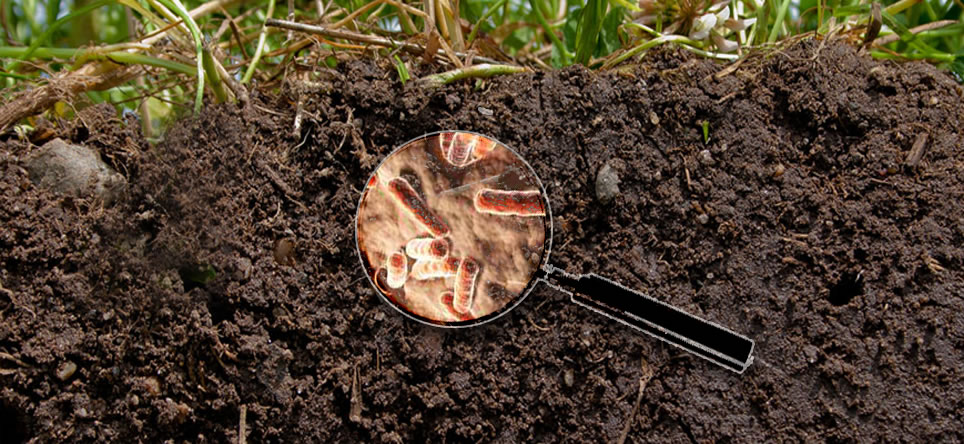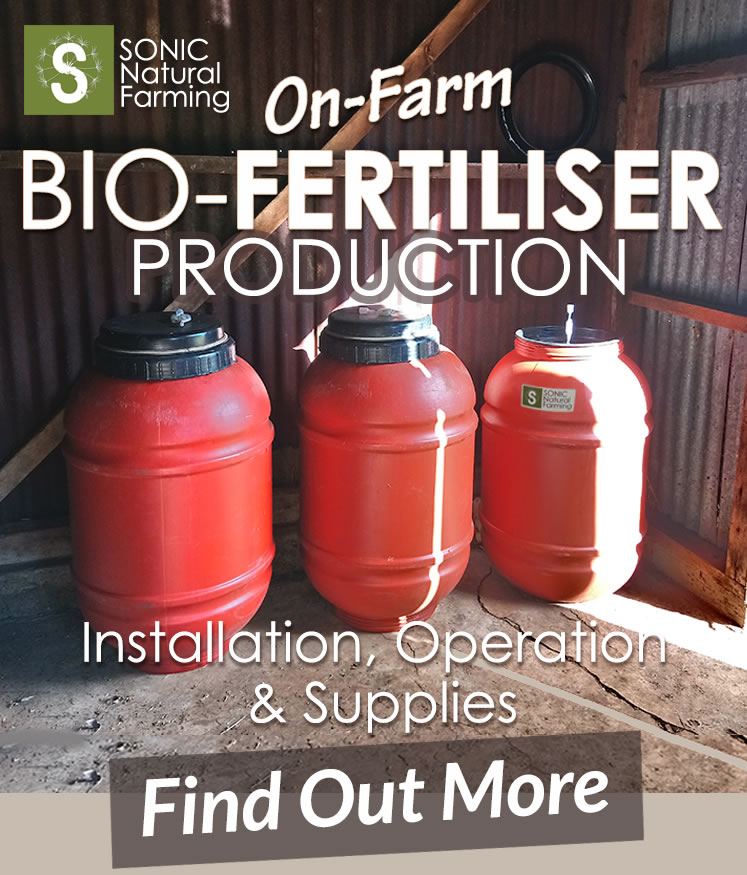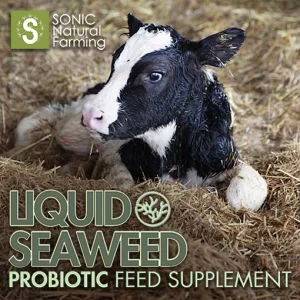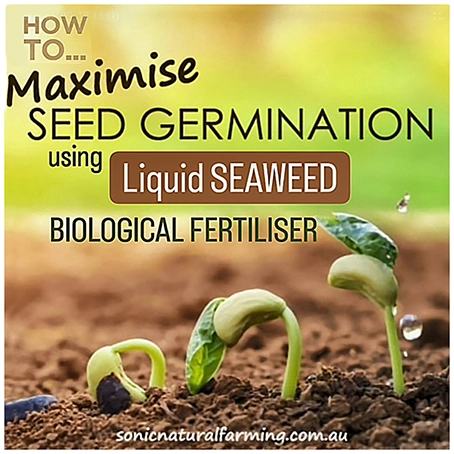Liquid seaweed fertiliser has gained significant popularity in sustainable agriculture due to their natural, nutrient-rich properties that promote plant growth and soil health. However, not all seaweed fertilisers are created equal, and understanding the differences in their production methods is crucial for making informed choices.
This article delves into the two primary types of liquid seaweed fertiliser: those made through biological fermentation and those produced via extraction processes. By comparing fermented minerals with extracted minerals, we can better appreciate their distinct benefits.
What is Liquid Seaweed Fertiliser?
Liquid seaweed fertiliser is a natural, organic solution derived from various species of seaweed. It is renowned for its ability to enhance plant growth, boost soil health, and improve overall crop yield.
Rich in essential nutrients, including trace minerals, vitamins, and amino acids, liquid seaweed fertiliser provides a balanced nutrient profile that promotes robust plant development. Widely used in agriculture, seaweed fertiliser supports sustainable farming practices by offering an eco-friendly alternative to synthetic fertilisers, contributing to healthier soils and more resilient crops.
How is Fermented Liquid Seaweed Fertiliser Produced?
Fermented liquid seaweed fertiliser is created through biological fermentation, which uses natural microbial cultures to break down seaweed and enhance its nutrient profile. This process increases nutrient bioavailability, making essential minerals more accessible for plant absorption.
Microbes play a key role in fermentation, producing a balanced, nutrient-rich, and chelated mineral concentrate that supports soil health. By boosting microbial activity, fermented liquid seaweed fertiliser promotes healthier, biologically active soil ecosystems.
Moreover, fermentation naturally preserves beneficial compounds such as growth hormones and antioxidants without the need for chemical additives, ensuring a safe and effective fertiliser option.

How is Liquid Seaweed Fertiliser Extract Produced?
Liquid seaweed fertiliser extract is made using processes which aim to isolate specific nutrients and active compounds from seaweed.
Seaweed fertiliser extract, such as Seasol, is produced through methods like chemical extraction, thermal extraction, and cold pressing. The specific details about the techniques used for producing Seasol aren’t publicly available, however, the end product is a concentrated liquid, rich in specific minerals, amino acids, and growth hormones such as cytokinins and auxins.
Liquid seaweed fertiliser extract is formulated to provide immediate, targeted nutrition to plants, promoting fast growth and enhanced stress resistance.
Due to their concentrated nature, these products are often applied in smaller quantities, offering a quick solution to nutrient deficiencies and supporting plant vigour at critical growth stages.
Liquid Seaweed Fertiliser Extraction Methods Include;
Chemical Extraction
Chemical extraction is the process of extracting beneficial compounds from seaweed through chemical means. This method involves breaking down the cell walls of the seaweed using solvents or enzymes, resulting in a concentrated liquid seaweed fertiliser extract.
Using Cold Pressing to Extract Minerals
Cold pressing involves mechanically pressing the seaweed to extract its juices. While these methods can concentrate certain nutrients, they may also lead to the loss of complex beneficial compounds found in the whole plant. This trade-off can impact the overall effectiveness of the final liquid seaweed fertiliser product.
Thermal (Heat) Extraction
Heat is sometimes used to extract minerals from seaweed. This process, known as thermal extraction, involves applying heat to break down the seaweed cells and release their contents.
Making liquid seaweed fertiliser using thermal extraction can degrade sensitive nutrients and bioactive compounds, potentially reducing the overall effectiveness of the final product. Using a heat process can compromise the quality and complexity of beneficial compounds that are more effectively preserved in other methods, like cold pressing or biological fermentation.
Seaweed Fertiliser Extract: Additives
In the production of liquid seaweed fertiliser extracts, additives or preservatives are often used to enhance shelf life, stability, and consistency of the product. These additives can include stabilisers to prevent separation, preservatives to inhibit microbial growth, and sometimes additional nutrients to boost the fertiliser’s nutrient profile.
While these ingredients can improve the product’s usability and longevity, they may also introduce synthetic chemicals that some growers prefer to avoid, particularly those focused on organic or natural farming practices. Such additives may alter the natural balance and effectiveness of the seaweed fertiliser.

What’s the Difference Between Liquid Seaweed Ferment and Liquid Seaweed Extract?
Nutrient Profile Differences
Fermented liquid seaweed fertilisers boast high nutrient bioavailability and complex organic compounds, thanks to the natural breakdown of nutrients by microbes.
In contrast, liquid seaweed extract products may have concentrated nutrients but often lack the full spectrum of compounds present in the original seaweed.
Seaweed Ferments offer Microbial Diversity
Fermentation promotes beneficial microbial diversity, enhancing soil health and plant growth, whereas extraction methods can sometimes diminish or eliminate these microbes.
Fermented Fertilisers use less Energy to Produce
Fermented production methods are generally more eco-friendly, utilising natural processes and minimal energy. In contrast, extraction can involve chemical and energy-intensive methods.
Biological Fertilisers assist Long-Term Soil Health
Seaweed extract is made using a chemical or heat extraction, to concentrate specific nutrients like potassium. In contrast, liquid seaweed biological fertiliser uses natural fermentation, preserving a broader range of nutrients and adds beneficial microbes to the soil.

Liquid Seaweed Fertiliser Extract Benefits
Liquid seaweed extracts advantages include;
Seaweed Extracts have a Long Shelf-Life
Extracted liquid seaweed fertiliser often have a longer shelf life compared to fermented products. The extraction process can help preserve some of the active compounds in a stable form for an extended period of time without compromising their effectiveness.
Extracted Seaweed offers Customisable Formulations
Chemically extracted liquid seaweed fertiliser can be formulated to contain specific ratios of beneficial compounds such as plant growth hormones (auxins, cytokinins), trace minerals (iron, zinc), vitamins (B12), and amino acids. This allows for tailored solutions that cater to specific plant needs or desired outcomes.

Fermented Liquid Seaweed Fertiliser Benefits
Biologically fermented liquid seaweed fertiliser benefits;
Biofertilisers offer Bio-available Nutrition
During the fermentation process, beneficial microorganisms break down the seaweed’s organic matter into smaller molecules, releasing beneficial compounds, and making them more bioavailable for plants to absorb. This results in enhanced nutrient uptake and improved plant growth.
Biological Fertilisers Stimulate Plant Immunity
One of the key advantages of biologically fermented liquid seaweed fertiliser is its ability to stimulate plant immune systems. The fermentation process enhances the production of natural compounds like phytohormones, vitamins, enzymes, and amino acids that can boost plants’ resistance against diseases and pests.
Fermented Liquid Seaweed offers a Full Spectrum of Organic Minerals
Additionally, fermented liquid seaweed fertiliser contains seaweed’s full range of nutrients essential for plant growth. These include macro and micronutrients such as nitrogen, phosphorus, potassium, calcium, magnesium, iron, zinc, and trace elements.
Seaweeds amazing range, and quality, of nutrients contributes remarkably to healthier plant root growth, increased flowering or fruiting capacity, improved soil structure, and overall plant strength.
Soil Microbes Love Bio-available Liquid Seaweed
Furthermore, the use of biologically fermented liquid seaweed fertiliser can enhance soil fertility by promoting microbial activity. The beneficial microorganisms present in the fermented solution, boost beneficial microbe populations in the soil.
The underground networks, created by increasing microbe populations in the soil, help to build and balance soil structure. These microbial communities help break down organic matter, turn it into humus and facilitate nature’s highly efficient nutrient cycling capabilities.
Seaweed Biofertiliser: Additional Uses
Fermented liquid seaweed fertiliser is versatile and beneficial beyond standard crop applications. It serves as an effective seed treatment (inoculant), boosting microbial activity and promoting early plant growth. This makes it safe and beneficial for seedlings, ensuring robust early development.
Additionally, there is no withholding period after spraying on pastures, allowing farmers to maintain continuous grazing without concerns about safety or compliance. Biologically fermented products like SONIC Liquid Seaweed Livestock Supplement, also offers a natural nutrient source, to enhance animal health.

Which One Suits your Farm: Fermented Fertilisers or Extracts
The effects of applying liquid biologically fermented seaweed fertiliser is largely dependant on the farming methods used. For example, the more diversity and density that is growing above the ground, the more microbial activity there will be under the ground. See article ‘Top 2 Methods for Cost Effective Soil Building’.
If you are heavy tilling and use high levels of chemical fertiliser, then the benefits of chemically extracted seaweed fertiliser is going to work for you, and you will get all the benefits of longer shelf life and customisable formulations.
When looking into the effects of a chemical extract, versus cold processed seaweed fertiliser, studies show that some of the properties of seaweed are lost due to the process of chemical extraction. However, in agricultural applications where the use of liquid seaweed fertiliser extracts are used, they still indicate enhanced plant growth.
Biologically fermented liquid seaweed fertiliser offers unique advantages compared to traditional seaweed extracts. Regenerative agricultural systems and practices are well suited for biological liquid seaweed fertiliser use, and benefit the most from natural products. This makes it an excellent choice for farmers, gardeners, and agricultural enthusiasts who seek sustainable ways to enhance plant health and productivity.
Practical Applications and Use Cases
Fermented Seaweed Biofertilisers in Organic Farming
This option is ideal for farmers seeking to enhance soil health and boost microbial activity naturally. Its nutrient-rich profile supports long-term soil fertility and plant resilience, making it suitable for organic farming and sustainable agriculture practices.
Seaweed Extracts: Speedy Minerals for Deficiencies
These are beneficial in scenarios requiring immediate nutrient supplementation or where specific nutrient deficiencies need to be addressed quickly. Liquid seaweed extracts are often used for rapid growth stimulation in commercial crops.

Choosing the Right Liquid Seaweed for your Crops
Consider soil type, crop needs, and environmental goals when selecting between fermented and extracted liquid seaweed fertilisers.
To make the best decision for your farm, consider conducting your own trials.
Fermented liquid seaweed fertilisers are ideal for growers who want to invest in the long-term health of their soil ecosystem. They encourage robust root development, improve soil structure, and foster beneficial microbes.
Extracted formulations are better suited for those needing targeted nutrition and quick results, as they concentrate specific nutrients beneficial for particular stages of plant growth.
Ultimately, the choice comes down to your specific agricultural needs. Do you want to focus on holistic soil health and biological activity, or are you looking for quick nutrient delivery to meet immediate plant requirements? By trying both types of liquid seaweed fertilisers, on a small scale, you can see firsthand which method aligns best with your farming practices and objectives.
Summary
Liquid seaweed fertiliser extracts, like Seasol, are designed to boost specific mineral uptake and provide immediate nutrient availability.
In contrast, seaweed ferment uses natural fermentation, preserving a broader range of nutrients and adding beneficial microbes and enzymes that support soil health and plant growth. As a result, liquid seaweed ferment offers a more holistic approach to soil and plant nutrition by supporting both immediate nutrient needs and long-term soil fertility.
Disclaimer:
The information provided in this article is for general informational purposes only and is not intended as professional advice. Each farming situation is unique, and we encourage farmers to assess their individual circumstances before making any decisions. The insights shared here are based on our direct experience and independent research. We have compiled this information to support and guide farmers exploring regenerative farming practices in Australia, but it is always advisable to seek advice tailored to your specific needs and conditions.
At SONIC Natural Farming, we’re committed to helping farmers easily access Biological Fertilisers, at the same time as saving big!
SONIC On-Farm Production Services minimise transportation costs. Plus, by reusing packaging on the farm, farmers can reduce plastic waste and packaging expenses, saving even more.
But that’s not all—SONIC Production and Training Packages empower farmers to produce their own Biological Fertilisers using the most eco-friendly and cost-effective solutions in the Australian organic fertiliser market today.
Want to see how we can help you beat the high cost of fertiliser?

















